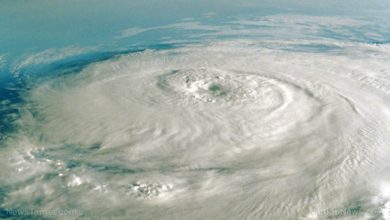The Next Plandemic? CDC Says Prepare To Prevent Another Human Case of Avian Influenza

Now that avian influenza has infected cattle in both Texas and North Carolina, the Centers for Disease Control is alerting to the concern that this could make the jump to human beings. One person in Texas has already been infected, and the CDC has stated that it intends to “discuss preparedness planning” for a human transmissible clade.
All while saying that the chances of this mutating becoming transmissible to humans are low, and having stockpiles of “vaccines” already ready for human use, it seems like the fear factor is being raised as COVID-19 concerns are pretty much nonexistent.
At a recent meeting, scientists from the United States Department of Agriculture said the virus is not presenting like a respiratory illness in cattle. That means that the animals don’t appear to be shedding large amounts of virus from their nose or mouths, which would make it really easy to contract and spread.
Instead, federal health officials investigating the outbreak suspect some form of “mechanical transmission” is responsible for spreading the virus within the herd. This may be happening during the process of milking the cows, a theory supported by the fact that high concentrations of virus are being found in the milk.
They say the risk to humans hinges on whether the virus can evolve in key ways to better infect mammals.-NPR
“I want to emphasize really how unusual this is,” says Thijs Kuiken, a professor of comparative pathology at Erasmus University Medical Center. “In other mammalian species with influenza viruses, it’s primarily a respiratory disease, which doesn’t seem to be the case in these cattle.”
Rising Cases of Bird Flu in Mammals Sparks Concerns Of Human Transmission
“We really need to keep on top of this, because I think we are at a bit of a precipice where something interesting or unfortunate could happen,” says Michelle Wille, a senior research fellow at the Center for Pathogen Genomics at the University of Melbourne.
What is most concerning is that big pharma has already been tasked with creating a “vaccine” for a virus that is supposedly low risk, and one that hasn’t even mutated to infect humans easily.
Bird Flu “Vaccines” Are “Authorized” & “Warehoused” As CDC Demands Human Surveillance
Celldemic is a zoonotic H5N1 influenza vaccine intended for active immunization of adults and infants from 6 months of age in the event of influenza outbreaks originating from animals, including situations where public health authorities foresee a potential pandemic.
Incellipan is a pandemic preparedness H5N1 vaccine and is intended for deployment solely upon the official declaration of a flu pandemic. After identifying the virus strain responsible, the manufacturer can incorporate it into the authorized vaccine. They then need to seek authorization for that vaccine as the “final” pandemic vaccine. The accelerated authorization process for the final pandemic vaccine is facilitated by the prior assessment of its quality, safety, and efficacy with other potential pandemic strains. –Medscape
If this is so low of a risk, why are there already “vaccines” warehoused? Is the public going to actually see something devastating this time (unlike the colds they got during the COVID scamdemic) that will make them want to readily inject themselves with whatever the rulers tell them? Anything is possible, but the messaging seems rather mixed until one looks closer:
Research Funded By Fauci And Gates Could See Bird Flu Become The Next Deadly Pandemic
Genetic sequencing of the virus in the Texas dairy worker who tested positive showed it had undergone a mutation in a gene, PB2, that commonly gets affected when the virus infects mammals. This is a “clue” that the virus is evolving to better replicate inside a mammal, but it’s not sufficient to make the virus transmit more easily between humans, says Nichola Hill, a disease ecologist at the University of Massachusetts Boston.
“It needs a handful [of markers] coordinated across multiple different gene segments for it to really be this breakthrough and the next pandemic,” she says. “There certainly are many mutations that occurred with this jump from wild birds into cattle and we don’t necessarily understand what they mean.”
The virus would also need to become airborne and be readily able to infect humans as they spread it between each other in close proximity.







